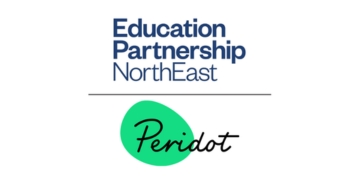Jon Eaton reflects on an early foray into online learning and how EEF research helped him learn lessons fast for the benefit of his students
It was the first week of lockdown and I had to plan a lesson that involved analysing imagery in Othello. To help students get to the point where they were able to do this, I needed to isolate examples and define unfamiliar vocabulary. Thinking I’d be able to recreate the orderly stepping stones of explicit instruction, I decided a pre-recorded video lesson would be the best approach.
Was it the best teaching option? Why didn’t I teach in real time? These are questions many teachers have been, and will continue to, grapple with.
Personally, despite volubly pooh-poohing the efficacy of synchronous online lessons, I secretly feared the prospect of live public failure. It was at least another week before I felt confident enough with the technology to go live. As with most teachers, after years of teaching in the classroom, online teaching and mediating home learning in new ways was nerve-racking.
And so, I made the Othello teaching video. It took a long time, but I was pleased with the end result…until I watched it fully!
My video lesson on Othello offered all prattle and too little practice
The challenging truths of online teaching were revealed. Most of the students had indeed tried to analyse imagery, and many had done it well. But there were a substantial number whose answers were a more or less exact duplication of the points I’d made in the video. They were earnest, but they weren’t having to think very hard. Also, there were a few who claimed they didn’t know exactly what they were supposed to do.
At roughly the same time, the Education Endowment Foundation (EEF) released their Covid-19 resources, one of which is the Home Learning Planning Framework. This document helps schools create learning sequences to use during remote instruction (note that it is a “learning sequence”, not a lesson plan: a sequence may span several lessons). The steps are as follows:
- Activate: prompt pupils to think about what they have learnt previously.
- Explain: explicitly teach strategies to pupils and help them decide when to use them.
- Practise: pupils practise strategies and skills repeatedly to develop independence.
- Reflect: pupils reflect on what they have learnt after they have completed a piece of work.
- Review: revisit previous learning after a gap.
These common-sense steps reminded me that for effective home learning, we need to foreground substantial practice time with supporting teacher modelling. Alongside this, we may need to consider subject-specific adaptations to the strategies for home learning.
My experience with teaching Othello online clearly demonstrated that: if we don’t carefully model and scaffold home learning (along with making a plan to remove scaffolding), then we end up with dependent learners and limited learning.
As the Home Learning Planning Framework states, “These metacognitive strategies will be particularly important for your pupils if you can’t be with them in the classroom, along with a consideration of how we learn and how we remember what we have learnt.”
In Othello, when Iago mocks Michael Cassio’s military credentials, he says, “Mere prattle, without practice, is all his soldiership”. My video lesson, notwithstanding its helpful illustrations and considered voice-over, had offered all prattle and too little practice!
The online format had suckered me into lecturing. I’d given them 30 minutes of subject knowledge but I’d assumed, several times, that they had the strategies to do something with this information. Some had; most hadn’t.
In retrospect, I should have spent more time telling them how to analyse imagery, showing them how to annotate usefully, asking them why we annotate and so on. I should have given over at least half the lesson to scaffolded practice. I should have turned down the information dial and turned up the strategy dial.
Perhaps one ‘benefit’ of remote learning is the way it revealed the blind spots between students’ understanding and my assumptions about their understanding. Those blind spots, I now realise, were bigger than I thought, and they are present in the classroom too.
It is a vital lesson: however much you think you’re supporting students with successful home-learning strategies, there is always value in doing more.








Five separate videos – that’s going to take some time to produce.
And what about the 10% with no IT access at home? How do you provide something as good as this for them so they are not disadvantaged?
How would this work in the real world?